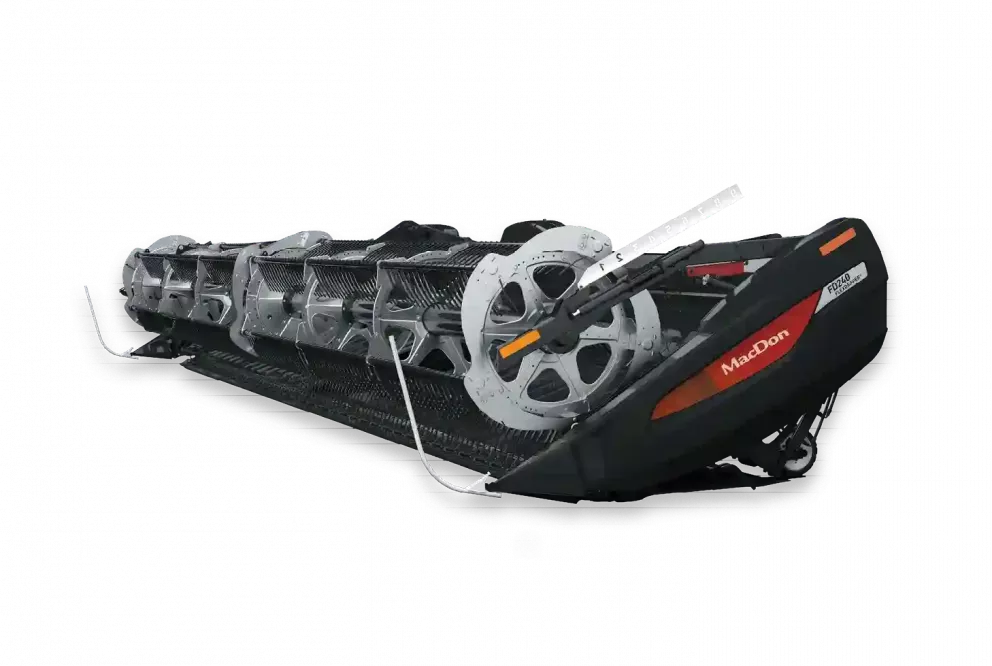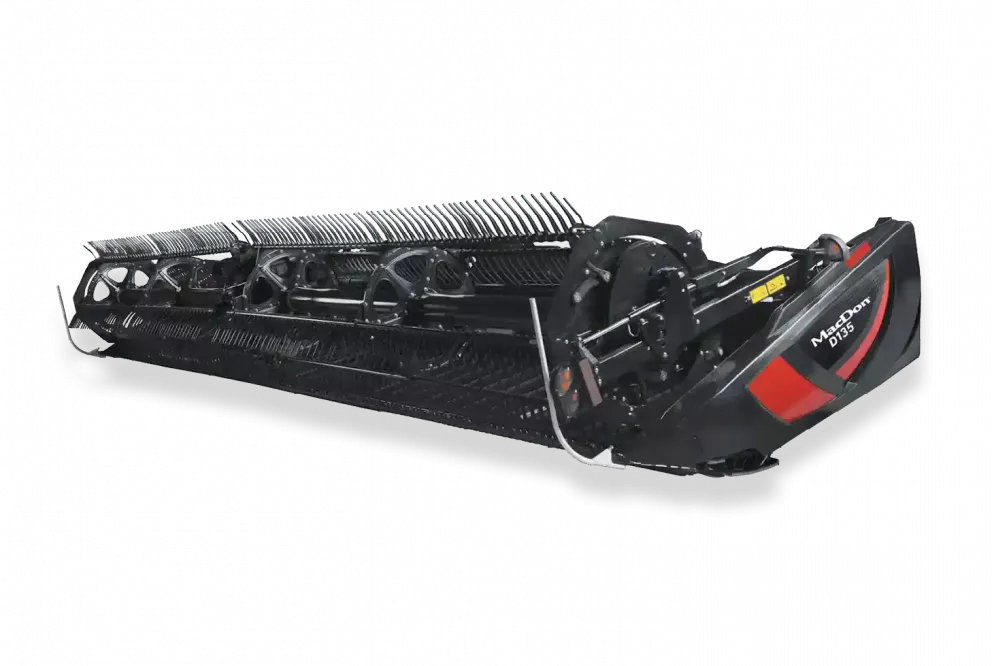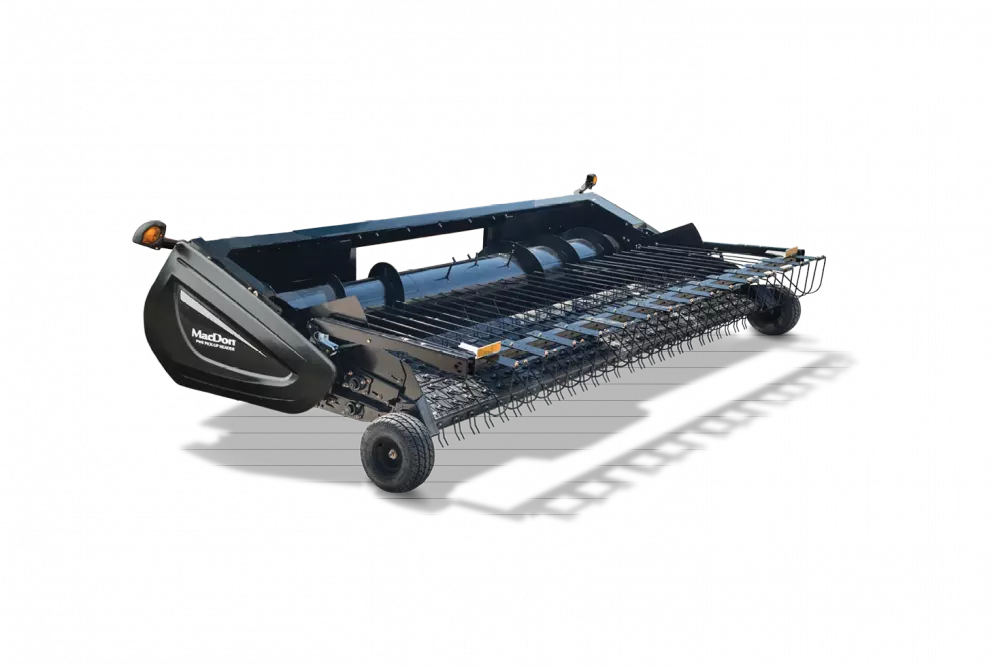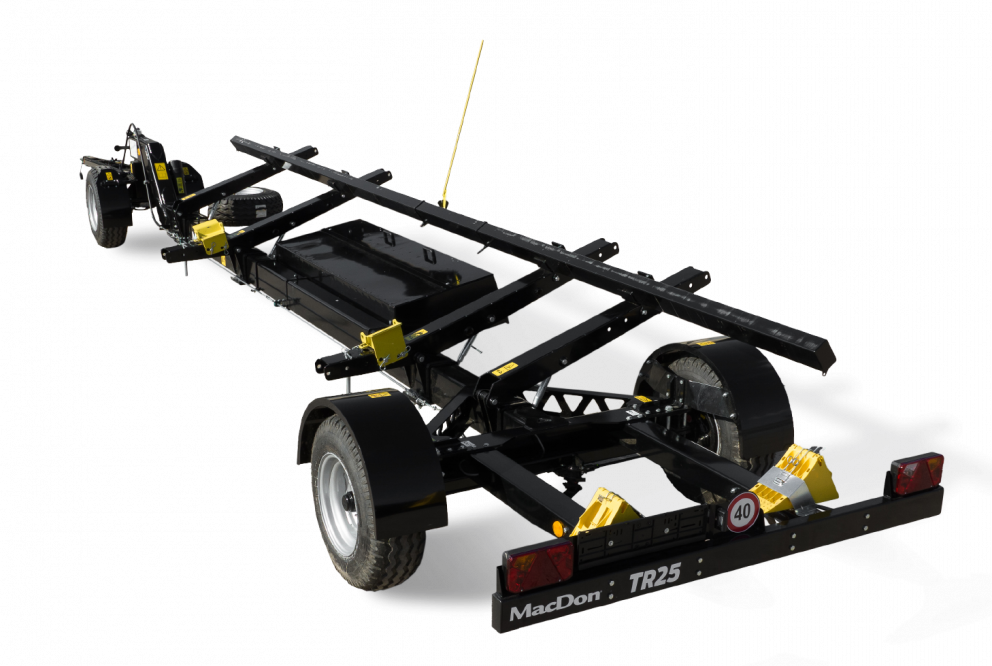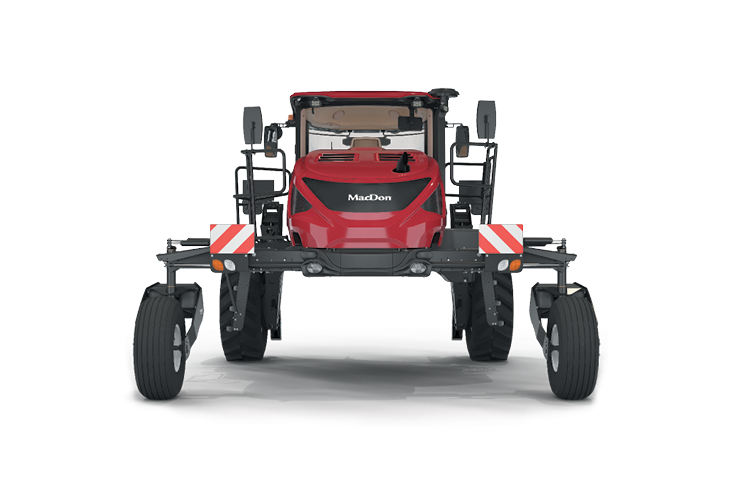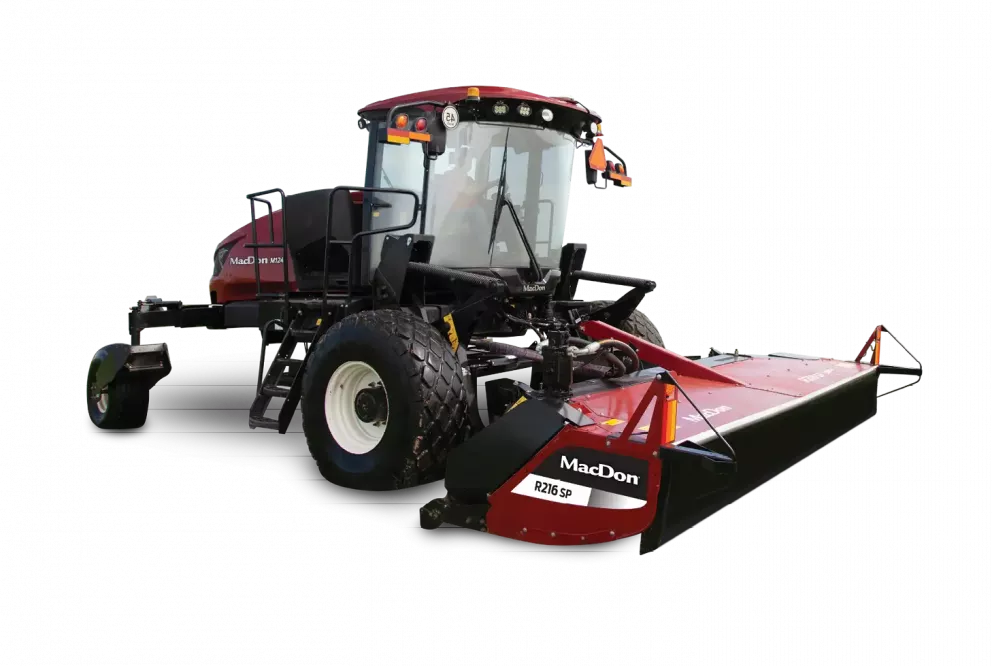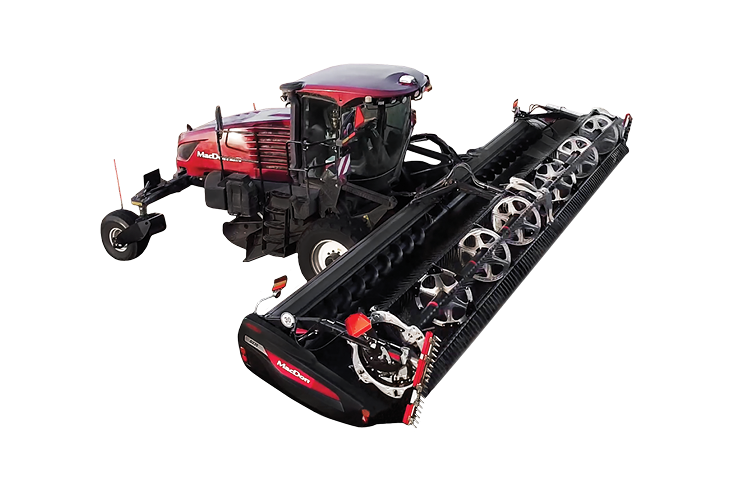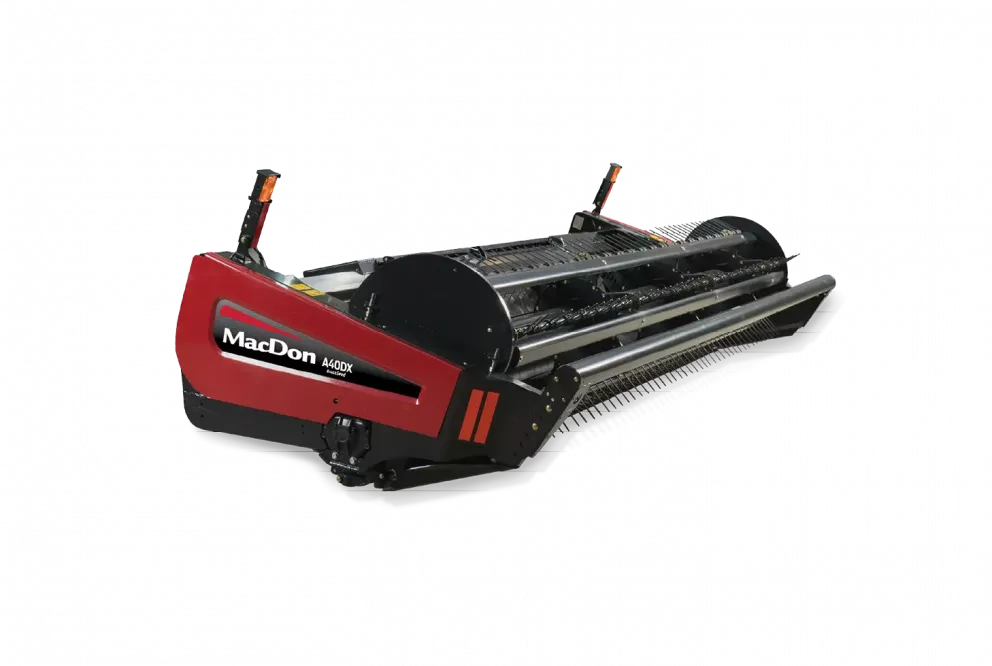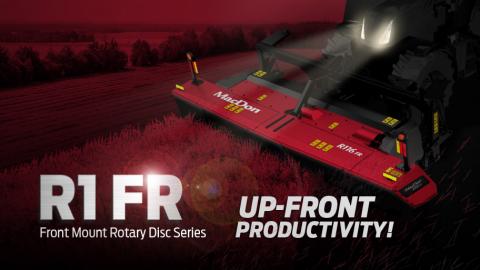Making the grade
Saskatchewan’s Rumpf family makes their lives easier with MacDon Products.
THEY CAN’T BELIEVE THAT WE CAN RUN 40 FEET IN OUR HILLS, AND DO THE JOB THAT WE’RE DOING.
The land around the Battlefords in northwestern Saskatchewan is considered some of the province’s most scenic. In summer the picturesque landscape of the North Saskatchewan River valley becomes a dreamy patchwork of golden wheat and canola fields set amongst green stands of trees and steeply rolling hills. Travelers rushing through on the nearby Yellowhead Highway, on their way between Saskatoon and Edmonton, can’t help but drive a little slower to make the panorama last. Unfortunately, what is breathtaking to the eye can represent a real challenge to the farmer.
“I don’t know what the grade would be,” says Henry Rumpf about the hills on his 15,000 acres of land about 15 miles (24 km) west of the town. “But, let me put it this way, if you were riding with me you’d probably need an extra pair of pants.”
Henry farms this land, which has been in the family for 35 years, with three of his four sons Perry, Mark and Allan (son, Wayne, handles the farm’s trucking). Their land is not all hills – they have some flat fields too – but it is the hills which are the defining factor when it comes to making equipment choices. In a place where the average size of header is 25 and 30 foot, it was quite a surprise to some of their neighbors when the Rumpf’s decided on three new MacDon 40 foot D60 Draper Headers for their John Deere 9870 combines. The Rumpf’s also picked up two of MacDon’s higher-powered M200 Windrowers for their swathing needs, saying that the ability to run the same headers on them was also a big selling factor.
“They can’t believe that we can run 40 feet in our hills, and do the job that we’re doing,” says Rumpf who adds that he too was surprised with how his D60s performed.
In an especially heavy wheat crop – “If you believe me, we averaged 50 bushels across 7,000 acres” – he was able to cut at about 4.5 MPH (7.2 km/h) with the new D60s, about 1 MPH (1.6 km/h) faster than with his previous 36 foot headers on John Deere 9780s. In 33 bushel canola – “we had some hail damage” – he was even faster picking up the swaths, about 6 MPH (9.6 km/h). Rumpf says that some of that increase in speed was expected because of the newer, larger combines, but much was also due to the excellent feeding qualities of his D60s, which makes it easier for the combine’s thresher to run at peak efficiency, and thus achieve maximum ground speed for the crop and terrain conditions.
“Oh yeah, you can feed the combine all it needs. I could just go faster.”
In addition to the feeding, Rumpf and his sons have found a number of other things to love about their D60s. One thing in particular is the D60’s high responsive spring flotation system and improved cutterbar, which together almost eliminated “digging” in their terrain. Another is the D60’s self-contained transport system, which allows them to quickly detach the header and tow it behind the combine when moving from field to field – eliminating the need for an extra person and a flatbed.
“We’ve got something like a 25 mile (40 km) drive between our fields, and it’s through town. So it’s nice being able to hook the header behind the combine and away you go.”
The new D60s also shine when swathing. He says that he and his sons were very pleased with their ability to lay a smooth, lump free swath in a challenging canola crop. They report that the D60’s bigger opening in the back tube area and windrower height clearance is partly responsible for this, as it allows them to push a lot of material through and still maintain an even windrow.
“We can go faster with the D60s and still leave a nice swath. I mean we don’t even have shears on the end to divide the canola, and they work just as good as our old headers with dividers.”
The Rumpfs also love the math of their two 40 foot D60s. With them they’ve gone from four swathers to two, and are still finishing faster.
“We were running two 25 foots and two 30 foots, and now we are doing the same amount of acres with these two 40 foots. We’re doing it quicker now with 80 feet than the 110 feet.”
In addition to the better cutting and crop handling abilities of the D60, part of the productivity increase must be attributed to the two MacDon M200 Windrowers that they are mounted on.
“We’ve never had anything like them… lots of power. We were also really impressed with how quiet they were and comfortable to run.”
Not only did these two powerful 213 HP units have no trouble pushing the 40 foot headers over the hills through the heavy wheat and downed canola crops, they did so without hardly a hiccup or protest.
“We ran them the whole season, cutting 8,000 acres without stopping for anything. For new tractor units and headers to run all those acres and with nothing going wrong, well that’s pretty good. Some guys around here had all kinds of problems with their swathers last fall; they couldn’t get it cut or get the canvasses to drive properly. The competitive ones were giving lots of problems. There was one guy who had to get it custom cut because he couldn’t get it done.”
The disparity in performance didn’t go unnoticed.
“That guy who had to get it custom cut came and talked to us about our MacDons. Well, now he’s got two MacDons himself.”
